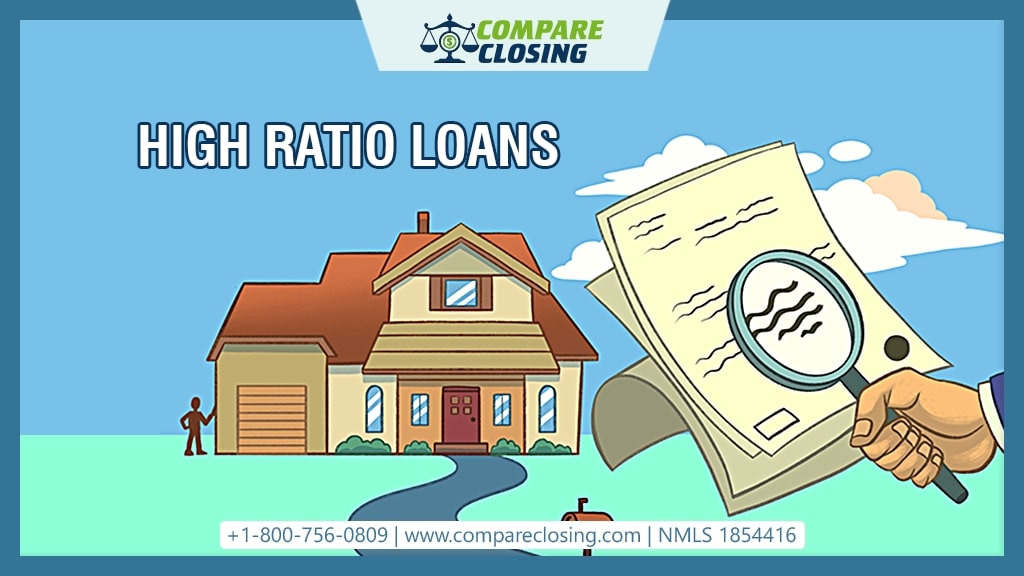Table of Contents
- What Are Netting Escrows & How Does It Work?: The Best Guide - January 2, 2024
- The Secret About Prescriptive Easement: Top Guide 1 Must Know - December 4, 2023
- About Home Equity Loans In Texas And How Can One Obtain It - November 27, 2023
About High Ratio Loans
Many of us are aware that when you purchase a property the lenders and the banks require a minimum of twenty percent as down payment so that they can provide a mortgage loan.
However, not everyone has that money to put down and that is when a high ratio mortgage comes into the picture. In this post, we will understand what a high ratio loan is in detail.
What Is A High Ratio Loan?
A high ratio mortgage is a type of loan that has a high loan amount compared to the value of the property used as collateral.
Usually, high ratio mortgages have higher interest rates compared to loans with lower ratios.
There are no specific guidelines for these types of loans, but loans with a loan-to-value greater than 80% are generally considered high ratio mortgages.
Mortgage loans can be divided into loans with a high ratio and loans with a low ratio (conventional) loan.
The ratio here refers to the loan-to-value (LTV) ratio, which is the percentage of the loan amount to the total property value bought and used as collateral.
If the ratio is higher than 80%, the loan is considered a high ratio. The lender takes higher risks compared to conventional loans by providing a high ratio mortgage.
Hence, they usually expect the borrowers to pay a higher interest rate, especially if the borrower has a low credit score.
Borrowers who cannot pay a large down payment (typically 20% in the case of a conventional mortgage) must take out a high ratio loan with a loan-to-value ratio greater than eighty percent. There are many high-ratio mortgage programs available to choose from.
FHA loan is one of the most famous among the high ratio mortgages, where the borrower can pay down payment as low as 3.5% of the property’s value.
There are other high-ratio conventional loans that allow borrowers to put down as low as 3% of the property’s value.
What Is The History Of High Ratio Loans?
Till the 1920s, people didn’t buy houses by going to the bank but saved their own money until they had enough money to at least buy land or property on it.
After the 1920’s construction loan companies helped people to borrow money to buy houses and then paid them back over several years. However, loans are usually for 50% of the home’s value or less.
In the late 1920s, banks provided loans with a high proportion of up to 80% of the value of the house.
Private mortgage insurance was created to protect the banks, but it all collapsed in the 1930s when the unemployed borrowers stopped paying and the lenders and private mortgage insurance companies also went out of business.
Congress passed the Home Owners’ Loan Corp., which began guaranteeing mortgages, and down payment ratios fell to 15%.
Later, through the Federal Housing Administration (FHA) and other agencies, down payments dropped to the low single digits and even 0% to encourage people to get into homeownership with low or no down payments.
This system flourished until 2007-2008 when the mortgage crisis hit 2008. A spike in subprime mortgage defaults in 2007 contributed to the worst recession in many years.
The boom housing market in the mid-2000s and the low-interest rates at the time, allowed many lenders to offer mortgages to borrowers with low credit profiles.
As the housing bubble burst, many individuals defaulted on their subprime mortgages.
Conclusion
High ratio loans are best for individuals that do not have 20% to pay for the down payment to purchase a home.
However, when you plan to get a high ratio mortgage, make sure that you would end up paying a higher interest rate and private mortgage insurance.
You need to incur these added costs for acquiring a high ratio mortgage.
Amanda Byford
Amanda Byford has bought and sold many houses in the past fifteen years and is actively managing an income property portfolio consisting of multi-family properties. During the buying and selling of these properties, she has gone through several different mortgage loan transactions. This experience and knowledge have helped her develop an avenue to guide consumers to their best available option by comparing lenders through the Compare Closing business.





